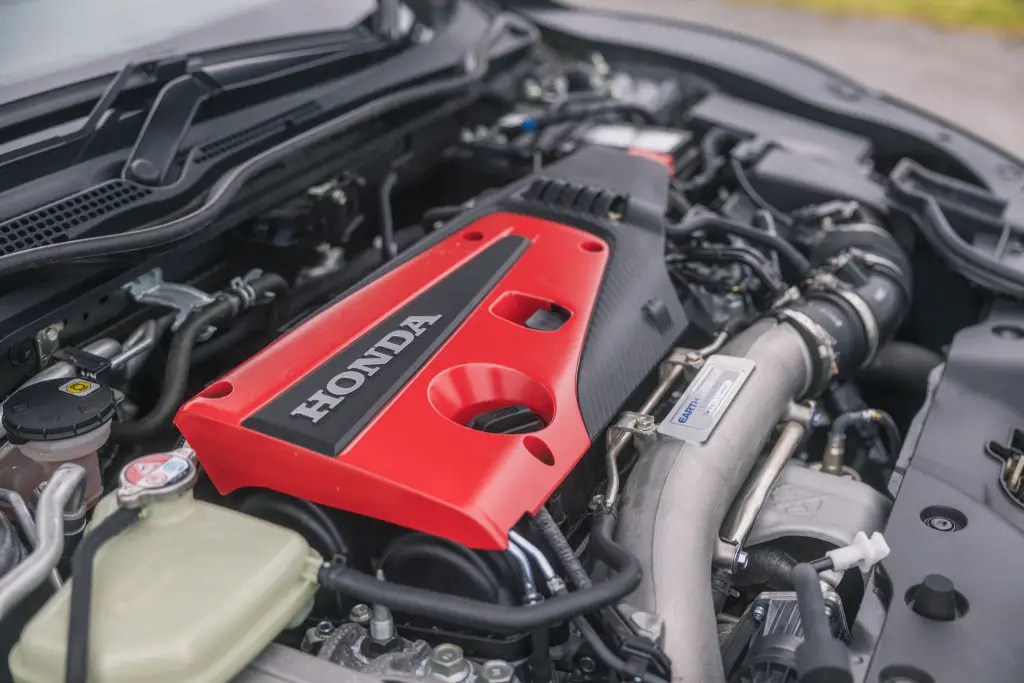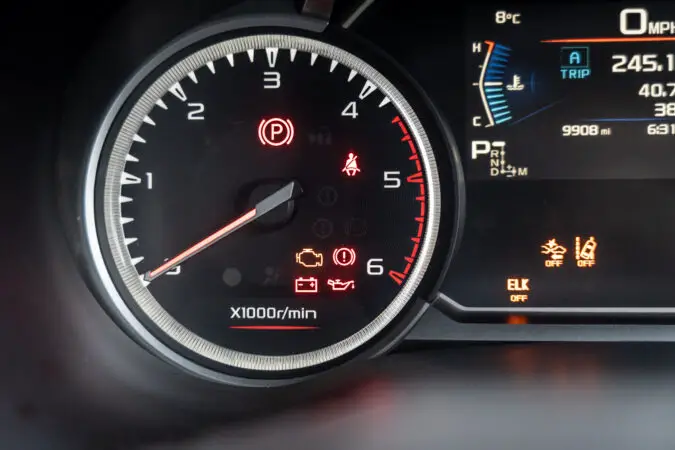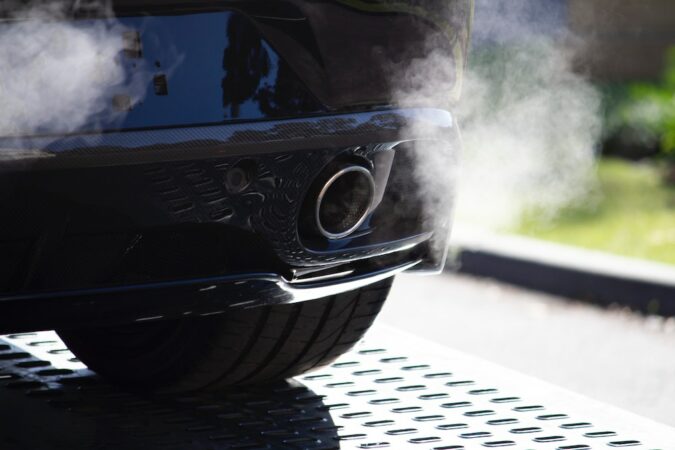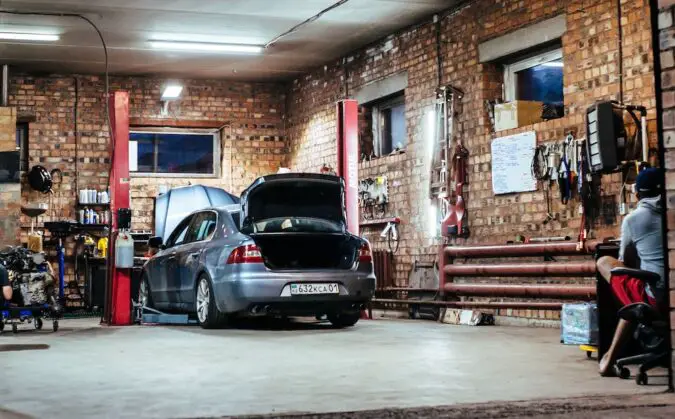Have you started noticing some weird symptoms on your car like a check engine light and poor engine work and are you considering doing a PCV valve replacement? If that is the case, then you are at the right place because there will be a lot to cover on this topic.
- PCV System
- PCV Diagram
- Valve Location
- Replacement Interval
- Symptoms
- Diagnosing
- Replacement
- Cost
- Conclusion
- F.A.Q
Having a problem like this can be a really frustrating thing to deal with because this PCV valve can get stuck in an open or fully closed position and whenever this happens you basically end up with an engine full of issues.
This is why sometimes it is worth doing a PCV valve replacement preemptively in order to avoid some of these issues on time and avoid ending up with an engine that doesn’t run well at all. This is why you need to learn the bad PCV valve symptoms and how to replace this valve. And honestly, it is really easy. But you shouldn’t worry because we are going to cover everything you need to know.
First, we will learn what is the PCV system and the PCV valve. Then we will learn more about the location of this valve and where you can find it. After we will take a look at the bad PCV valve symptoms and how to diagnose this problem. So, if you want to learn more, please follow along.
What Is A Positive Crankcase Ventilation System?
Now before we dive into the PCV valve replacement, let’s learn more about what is the positive crankcase ventilation system in general. This will be extra useful for beginners to understand more about this system and what is its role in the internal combustion engine.
The positive crankcase ventilation system is a special system that is installed on every modern internal combustion engine. This system helps the engine to breathe and allows it to last much longer. But how this system works?
Well, this is a ventilation system that works with the help of a vacuum. It basically ventilates your engine and allows it to have a proper flow of air. After the intake, there is a hose known as a breather tube. This tube pushes air into the engine on one side and on the other, there is the PCV valve that activates.
This PCV valve then pushes these gases that have accumulated inside of the crankcase from the blowby to enter the intake manifold and then into the combustion process to burn off.
If there wasn’t a PCV system, the blowby that is collected from the work of the cylinder would have nowhere to go. And this would have created a ton of inside pressure in the engine. Causing certain components to fail. So, now you understand why this system is really important and why the PCV valve replacement is essential when this valve fails. But more on that in a bit.
PCV Valve Diagram
Now before we dive into the PCV valve replacement, let’s cover this component in general and learn more about how it works, more precisely the PCV valve diagram. This will be extra useful for you to learn in order to understand how this system works behind the curtain.
The PCV system as we mentioned is a vacuum-driven system that has the goal to allow your engine to breathe and reduce the pressure on the internal components of your engine. Without it, the engine will simply destroy itself.
And in order to prevent this, the PCV valve is the key. This is an integral component that basically prevents damage to be done to your engine.
Usually, this valve is closed when the engine does not work. But as soon the engine comes to proper working temperature a vacuum inside of the engine is created and then the valve opens.
Then when the valve opens it releases the gases that have accumulated and redirects them inside of the intake manifold and lets them burn off into the combustion.
When it comes to the PCV valve diagram. It is worth noting that this is a spring-like device that has a spring. This spring gets compressed depending on the vacuum inside of the engine. This is a constant cycle depending much on the engine work and the pressure inside of the block.
So, the valve has a ton of cycles during its lifespan and after a ton of miles it will fail and you will need to perform a PCV valve replacement. But where is this PCV valve mounted? Let’s find out more on that next.
PCV Valve Location
Another interesting topic that is worth covering is the PCV valve location. There are a ton of people who are reading this and want to do a PCV valve replacement and do not know the exact location of this PCV valve on the car.
What is the PCV valve location? Well, that really depends from manufacturer to manufacturer. The main location for the PCV valve is on the valve cover. This valve is basically plugged into the valve cover and there is a hose running from it.
So, whenever you look at how to replace this valve, you should look for the hose that is running into the engine. What is also worth noting is that there are two hoses. One is the breather tube and one is the hose for the PCV valve.
For you not to get confused by this location. You should look for the number of your engine and then browse the web for the engine code + “PCV valve location”. There will be a ton of sources that you can check and pictures to make sure that you locate the PCV valve on your car correctly in order to perform a proper PCV valve replacement.
PCV Valve Replacement Interval
Now let’s cover another interesting topic and that is the PCV valve replacement interval. When you should replace this valve on your car. There are a ton of people that are asking this question to themselves and we think that this deserves a proper answer.
So, what is the right interval? Well, when it comes to this PCV valve, it is worth mentioning that there is no replacement interval.
You should replace this valve whenever you start noticing the bad PCV valve symptoms on your car that we are going to cover later on in this article.
But if you are one of those folks that want to wrench on their cars and fix things. You might want to replace this valve sooner than later. They are really cheap, so replacing them will not be a big problem for you.
If you purchased the car and you don’t know when the valve has been replaced. You might just do it and perform a PCV valve replacement. More on this and how it is done we will cover later on after we finish the bad PCV valve symptoms.
Bad PCV Valve Symptoms
As we covered the basics of the PCV system and learned more about the PCV valve. We think that now it is time to cover all of the bad PCV valve symptoms before we dive into the PCV valve replacement.
Knowing the symptoms will help you quite a bit when it comes to the diagnostics process. And how to determine that the PCV valve is broken and needs replacing on your car. So, let’s get into the symptoms.
1. Check Engine Light
The first symptom that you will probably notice whenever you have a problem with the PCV valve on your car that will indicate that you need to perform a PCV valve replacement is the check engine light.
What is worth noting is that the check engine light will not be triggered by the PCV valve itself because there is no regulation of this valve from the computer. Meaning that it is not connected in any way to the computer.
But what you can get are fault codes concerning the air to fuel mixture in your car. Such as P0171 (just like the P0171 code Toyota) or P0175. Or possibly P0300 which indicates random misfires inside of the engine.
Also, there are some codes that are closely associated with the PCV system. These are the P052E and the P053A. Now let’s cover the other symptoms before we dive into the PCV valve replacement.
2. Rough Engine Idle
Another symptom that we would like to cover before we dive into the PCV valve replacement is the rough engine idle.
Whenever the PCV valve fails, you will experience poor engine work, the will run really rough and you will have trouble keeping it afloat.
The RPM will fluctuate a lot and you will have a real problem running this engine as it should be run. So, whenever you notice something like this, it is worth checking these components first because sometimes the problem is in the little things such as the PCV valve. Now let’s move to the next symptom before we dive into the PCV valve replacement.
3. Bad Air To Fuel Mixture
The second symptom that is associated with this problem will be the bad air to fuel mixture. When you have a situation like this, it could be an indication that you need a PCV valve replacement. So, why is this the case?
Well, this is the case because if the PCV valve is stuck open it will allow too much air to pass through into the intake. So, the air to fuel mixture will be put in danger. In this situation, there will be a situation when the mixture is pretty lean. This means that there will be too much air and too little fuel.
If it’s closed, on the other hand, you will have too much fuel and too little air which is a rich air-to-fuel mixture. Both of these situations are no good and could indicate a need for a PCV valve replacement.
4. Engine Misfires
The next symptom that we would like to cover before we learn more about the PCV valve replacement is the situation with the engine misfires. What are misfires and why will be present?
Misfires in general are premature or delayed explosions inside of the cylinders. And it shouldn’t be this way. All explosions need to be even and perfectly timed out.
So, whenever you have misfires, it could mean that you have problems with spark plugs and coils. But it can also mean that you have either rich or lean air to fuel mixture like in our case from the broken PCV valve.
So, whenever this is the case, you should address the problem and perform a PCV valve replacement. More on this and how it is done the right way we are going to cover later on in the article. But first, let’s cover all of the symptoms associated with this problem on your car.
5. Oil Leaks
The fifth most common symptom that could indicate a need for PCV valve replacement is the situation of the oil leaks. But why is this the case?
Well, this is the case because your PCV valve is stuck closed and does not allow the pressure to be released.
So, consequently to this, you can expect problems like oil leaks to develop. And in this case, the oil leaks will come from everywhere.
The front and rear main seals can start to leak, and the valve cover and head gaskets can leak as well. If there is too much of this pressure, even the dipstick could be ejected from its place. So, you understand that this is a critical problem that could really harm your engine. PCV valve replacement is even recommended as a preventive measure to avoid situations like these.
6. Sludge In Oil
Another symptom that could indicate a need for PCV valve replacement is the sludge in the engine oil. This sludge will be accumulated if your PCV system is not working as it should. Why this will be the case?
Well, this will be the case because the situation when the gases cannot exit the engine will cause them to mix with the engine oil. And in this case, they will create a sludgy mess.
This sludge will be all over the engine. And could seriously harm the ability of your engine to lubricate itself.
Not to mention that the wear and tear of the internals of the engine will be too large. So the bearings will lose a ton of material. This will allow your engine to develop knock and other really unpleasant situations.
So, if you notice sludge in your engine and the engine doesn’t have a blown head gasket. Then you should consider the PCV valve as an option and perform a PCV valve replacement before it is too late and the engine destroys itself completely.
7. Black Smoke From Exhaust
The last symptom that we are going to cover that indicates a need for PCV valve replacement is the black smoke that will be present from the exhaust pipe. So, why this will be the case?
Well, this will be the case because the blowby gas will go into the crankcase and there will be no place for it to escape. So, the only way out will be through the piston rings.
And imagine that this gas will be mixed with oil and this will cause oil burning problem. The pistons will be covered in gunk and carbon deposits and the exhaust will release black smoke from all of the oil that was burnt in the process. And this is really something that you don’t want. But how you can diagnose a PCV valve that needs to be replaced? Let’s learn more about that next.
How To Diagnose A Bad PCV Valve?
Now before we learn more about the PCV valve replacement, let’s take a look at how you can perform a diagnostics process to make sure that the PCV valve is working or not.
Performing diagnostics on the PCV valve is fairly easy. There is a PCV test that you can do to make sure that this component is working as it should. So, how you can do this?
Well, the first thing that you can do is to remove the PCV valve from the car and leave the PCV hose on the valve.
Then start the engine and give it a few revs. The valve should create more vacuum as the engine is revving harder. The harder you rev the engine more vacuum, remember that.
If your PCV valve does not create a vacuum, then you are dealing with a faulty PCV valve. This valve needs replacing. How this is done you can check in the video above.
Another PCV test that you can pull off is by removing the valve and then giving the valve a little wiggle. A good valve should rattle inside. If the valve doesn’t produce rattling noises it means that it is stuck and this valve has to be replaced as well.
Another thing is to check the clamps for the valve hose and also the hose for any leaks. Replace them as well if you determine that they are damaged. Now let’s move to the PCV valve replacement.
PCV Valve Replacement
Now let’s get into the PCV valve replacement. How can you replace this PCV valve on your vehicle?
Well, actually is quite a simple thing to do. Also, it is beginner-friendly and most people out there could do it without any problems whatsoever.
The only thing you can do is to locate this PCV valve which is located on the top of the valve cover in most cases and with a screwdriver to pop out the valve.
Then remove the hose from the valve and replace the valve. Plug in the hose and you will be good to go. If the PCV valve hose is bad you can also perform a PCV valve hose replacement in the process. This way you will be sure that you avoid any future problems and you will not going to need a PCV valve replacement anytime soon.
PCV Valve Replacement Cost
So, what does the PCV valve replacement cost? We can say that it is really cheap. The PCV valve is only $5 or even less in some cases and if you replace it by yourself it will not going to cost you more than a cup of coffee.
On the other hand, if you decide to do a PCV valve replacement at a shop, you can expect to pay about $79 to $100 to do this work on your car. Now let’s conclude this article.
Conclusion
In this article, we have covered quite a bit when it comes to the PCV valve replacement. First, we learned what this valve is and how it works, we learned the location and how you can find it.
Then we focused more on the bad PCV valve symptoms and the replacement of this component. This is a really simple job and we recommend it to every beginner.
F.A.Q
Now let’s answer some frequently asked questions.
What Does PCV Stand For
PCV stands for Positive Crankcase Ventilation System. This system is basically the main ventilation system for your engine. It allows the buildup pressure to escape and also allows the engine to breathe.
What Is A PCV Valve
The PCV valve is a special valve of the PCV system that has the goal of relieving the pressure from the crankcase. This valve works with the help of a vacuum and whenever the engine starts it starts allowing the extra fumes from the crankcase to escape.
What Does A PCV Valve Do
This valve has a goal to release the pressure that is created in the crankcase and allow the engine to run properly. If the engine doesn’t breathe it could start leaking oil and other symptoms associated with this work will start to develop.
Where Is The PCV Valve Located
The PCV valve is located on top of the valve cover. Sometimes this valve is mounted on a different spot. It really depends on the carmaker and their decision of where they want to install it. So, check some engine diagrams in order to find the exact location of this valve.
How Much Is A PCV Valve Replacement
The average PCV valve replacement cost is about $70 to $100. It is fairly inexpensive. And if you decide to replace it by yourself, you will go even cheaper than this. And you should do it since it is such a simple job.
How To Tell If PCV Valve Is Bad
You can tell the PCV valve is bad if you notice some of the symptoms. Namely, like poor engine idle, oil leaks from the engine, and sludge in the oil. Also, you can try to wiggle the PCV valve, it starts rattling, then it is probably good, if it doesn’t then you should replace it.
How Important Is A PCV Valve Replacement
It is really important, without you replacing this valve, you basically are risking the life of your engine. The engine will suffer from oil leaks from the gaskets, sludge in the oil, and overall poor engine work. The engine will simply destroy itself if you don’t perform PCV valve replacement. That’s why you should do it as soon as possible.




